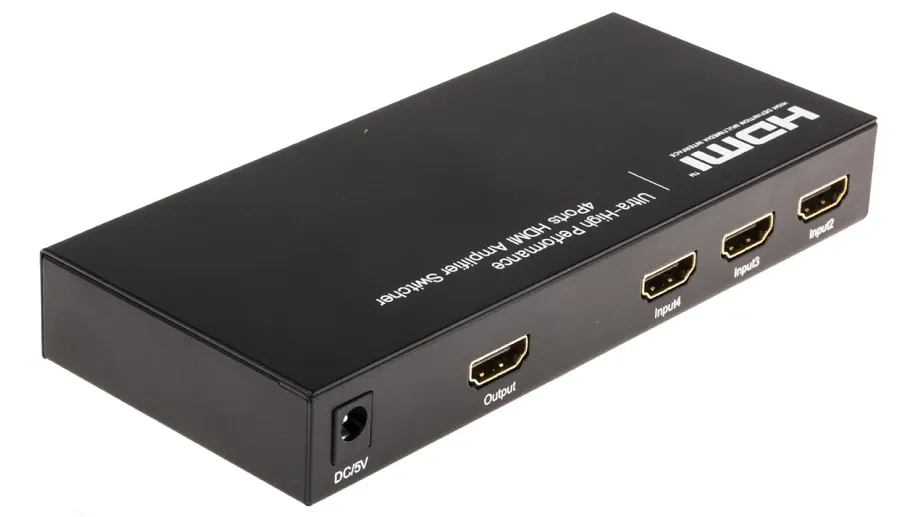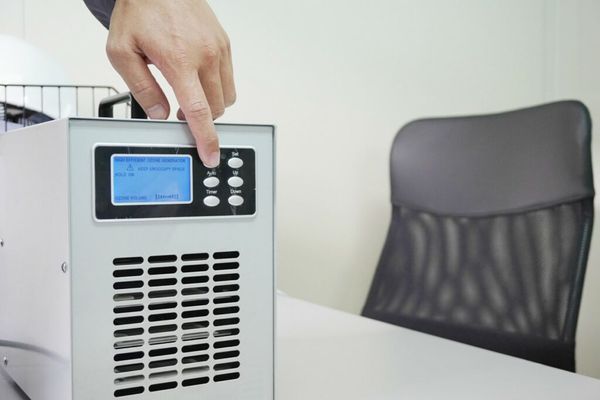Introduction
HDMI switchers have become essential in home entertainment systems, allowing users to connect multiple devices to their TVs or monitors and easily switch between them. These devices are particularly useful for those with limited HDMI ports on their TVs or who want to reduce cable clutter. In this article, we will explore the benefits of HDMI switchers, how to choose the right one for your needs, the difference between switchers and splitters, how to connect and set up a switcher, troubleshooting common problems, advanced features of HDMI switchers, predictions for the future of these devices, and reviews of top-rated HDMI switchers on the market.
HDMI switchers connect multiple HDMI devices, such as gaming consoles, Blu-ray players, streaming devices, and cable boxes, to a single HDMI input on a TV or monitor. The switcher acts as a hub, allowing users to easily switch between devices without physically disconnecting and reconnecting cables. With an HDMI switcher, users can simply press a button or use a remote control to switch between devices.
Benefits of HDMI Switchers for Home Entertainment Systems
One of the main benefits of using an HDMI switcher is its convenience. Instead of constantly plugging and unplugging cables when switching between devices, users can simply press a button or use a remote control to switch inputs. This saves time and eliminates the hassle of dealing with tangled cables. Additionally, some HDMI switchers offer automatic switching, which means they can detect when a device is turned on and automatically switch to that input.
Another advantage of using an HDMI switcher is that it helps reduce cable clutter and improves cable management. Instead of having multiple HDMI cables running from each device to the TV or monitor, users only need one cable from the switcher to the display. This not only makes the setup cleaner and more organized but also makes it easier to manage and troubleshoot any issues.
Furthermore, HDMI switchers can improve your home entertainment system's picture and sound quality. Most modern HDMI switchers, such as 4K Ultra HD and Dolby Atmos, support high-definition video and audio formats. This means that users can enjoy a crisp and clear picture and immersive surround sound when watching movies, playing games, or streaming content. Some HDMI switchers even offer advanced features like HDR (High Dynamic Range) support, enhancing the contrast and color accuracy of the displayed content.
Choosing the Right HDMI Switcher: Factors to Consider
Consider the following factors when choosing an HDMI switcher for your home entertainment system. First, you must determine the inputs and outputs you require. Think about how many devices you want to connect to the switcher and how many displays you want to connect to the switcher. For example, if you have three devices (e.g., gaming console, Blu-ray player, streaming device) and one TV, you will need a switcher with at least three inputs and one output.
Compatibility with your devices is another important factor to consider. Ensure that your HDMI switcher is compatible with the devices you want to connect. Check the specifications of both the switcher and your devices to ensure they support the same video and audio formats. Additionally, consider any specific features or functionalities you may need, such as 4K compatibility or support for HDR.
Budget is also a crucial factor when choosing an HDMI switcher. Prices can vary significantly depending on the switcher's brand, features, and quality. Set a budget for yourself and look for options within that range. Remember that while it's important to find a switcher that fits your budget, it's also important to prioritize quality and reliability. Cheaper switchers may not offer the same level of performance or durability as more expensive ones.
HDMI Switcher vs. HDMI Splitter: What's the Difference?
While HDMI switchers and HDMI splitters may sound similar, they serve different purposes. An HDMI switcher allows you to connect multiple devices to a single display and switch between them. In contrast, an HDMI splitter allows you to connect a single device to multiple displays and duplicate the content. In other words, a switcher allows you to choose which device's content is displayed on the TV or monitor, while a splitter duplicates the content from one device onto multiple screens.
Consider your specific needs when deciding whether to use a switcher or a splitter. If you have multiple devices that you want to connect to a single display and switch between them, an HDMI switcher is the right choice. On the other hand, if you have one device that you want to display on multiple screens simultaneously, an HDMI splitter is what you need. For example, if you want to watch a movie on two TVs in different rooms, you would use an HDMI splitter to duplicate the content from your Blu-ray player onto both TVs.
How to Connect and Set Up Your HDMI Switcher
Connecting and setting up an HDMI switcher is relatively straightforward. Here is a step-by-step guide to help you get started:
1. Gather all the necessary equipment: HDMI switcher, HDMI cables, devices (e.g., gaming console, Blu-ray player), TV, or monitor.
2. Identify the input and output ports on the HDMI switcher. The input ports are where you will connect your devices, and the output port is where you will connect your TV or monitor.
3. Connect one end of an HDMI cable to the output port of the switcher and the other end to an available HDMI input on your TV or monitor.
4. Connect an HDMI cable from each device you want to connect to the switcher to the input ports on the switcher. Make sure to match the correct input on the switcher with the corresponding device.
5. Power on all the devices, including the switcher, TV or monitor, and connected devices.
6. Use the remote control or buttons on the switcher to select the desired input. The content from that device should now be displayed on your TV or monitor.
7. If your switcher has automatic switching capabilities, enable this feature in the settings menu. This will allow the switcher to automatically switch to the active device when turned on.
Troubleshooting Common HDMI Switcher Problems
While HDMI switchers are generally reliable and easy to use, sometimes you still encounter issues. Here are some common problems and their solutions:
1. No signal: If you're not getting a signal on your TV or monitor, check all cables are securely connected and that the correct input is selected on both the switcher and the TV or monitor. Also, make sure all devices are powered on.
2. Poor picture or sound quality: If you're experiencing issues with picture or sound quality, check all cables are high-speed HDMI cables that support the necessary video and audio formats. Additionally, ensure your devices are set to output at their highest resolution and that your TV or monitor can display that resolution.
3. Switching delays: If there is a delay when switching between devices, it could be due to a slow response time of the switcher or a compatibility issue with one of your devices. Try disconnecting and reconnecting all cables, power cycling all devices, and updating firmware if available.
If you have tried troubleshooting common problems and are still experiencing issues with your HDMI switcher, it may be time to seek professional help. Contact the manufacturer's customer support or consult a technician specializing in audiovisual equipment.
Advanced Features of HDMI Switchers: 4K Compatibility, Remote Control, and More
Many HDMI switchers offer advanced features that enhance the user experience. One of the most sought-after features is 4K compatibility. With the increasing popularity of 4K Ultra HD content, it's important to ensure that your switcher can handle this high-resolution format. Look for a switcher that supports 4K at 60Hz and HDR for the best picture quality.
Remote control functionality is another useful feature to consider. Having a remote control allows you to switch between devices from the comfort of your couch without getting up and manually pressing buttons on the switcher. Some switchers even offer programmable remotes, allowing you to customize the buttons and assign specific inputs to them.
Another advanced feature to look for is automatic switching. This function eliminates manual input selection and provides a seamless user experience. Automatic switching can be particularly useful if you have devices frequently turned on and off, such as gaming consoles or streaming devices.
Future of HDMI Switchers: What to Expect in the Coming Years
As technology advances, we can expect HDMI switchers to evolve as well. One area of development is increased compatibility with emerging video and audio formats. With the rise of technologies like 8K resolution and immersive audio formats like Dolby Atmos, HDMI switchers must support these formats to provide users with the best possible experience.
Another area of improvement is the integration of wireless connectivity. While HDMI cables are currently the standard for transmitting high-definition video and audio signals, wireless technologies like Wi-Fi 6 and Bluetooth are becoming more prevalent. In the future, we may see HDMI switchers offer wireless connectivity options, allowing users to connect their devices without needing physical cables.
Additionally, we can expect HDMI switchers to become more compact and streamlined. As technology advances, manufacturers will find ways to pack more features and functionality into smaller form factors. This will make switchers more aesthetically pleasing and more convenient to use and transport.
Top HDMI Switchers on the Market: Reviews and Recommendations
Many HDMI switchers are available on the market, each with its own features and price points. Here are some top-rated HDMI switchers that are highly recommended:
1. J-Tech Digital JTD4KSP0301 4K HDMI Switcher: This switcher supports 4K at 60Hz and HDR, making it ideal for those who want the best picture quality. It has three inputs and one output, allowing you to connect multiple devices to your TV or monitor. The JTD4KSP0301 also comes with a remote control for easy input selection.
2. Fosmon HD1832 Intelligent 5-Port HDMI Switcher: This switcher offers five inputs and one output, making it perfect for those with multiple devices. It supports 1080p resolution and comes with a remote control for convenient switching. The HD1832 also has automatic switching capabilities, allowing it to detect a turned-on device and switch to that input.
3. Kinivo 501BN 5-Port High-Speed HDMI Switch: This switcher supports 1080p resolution and has five inputs and one output. It features a remote control for easy input selection and automatic switching capabilities. The 501BN also has a built-in signal amplifier, ensuring you get the best picture and sound quality.
Conclusion: Enhancing Your Home Entertainment Experience with an HDMI Switcher
In conclusion, HDMI switchers are valuable to any home entertainment system. They offer convenience, reduced cable clutter, and improved picture and sound quality. When choosing an HDMI switcher, consider the number of inputs and outputs you need, compatibility with your devices, and your budget. Remember that HDMI switchers differ from HDMI splitters, so choose the right device for your needs. When connecting and setting up your switcher, follow the step-by-step guide and troubleshoot common problems if necessary. Look for switchers with advanced features like 4K compatibility, remote control functionality, and automatic switching. Finally, consider top-rated HDMI switchers and read reviews to find the best one for your home entertainment system. With an HDMI switcher, you can enhance your home entertainment experience and enjoy seamless switching between devices.



